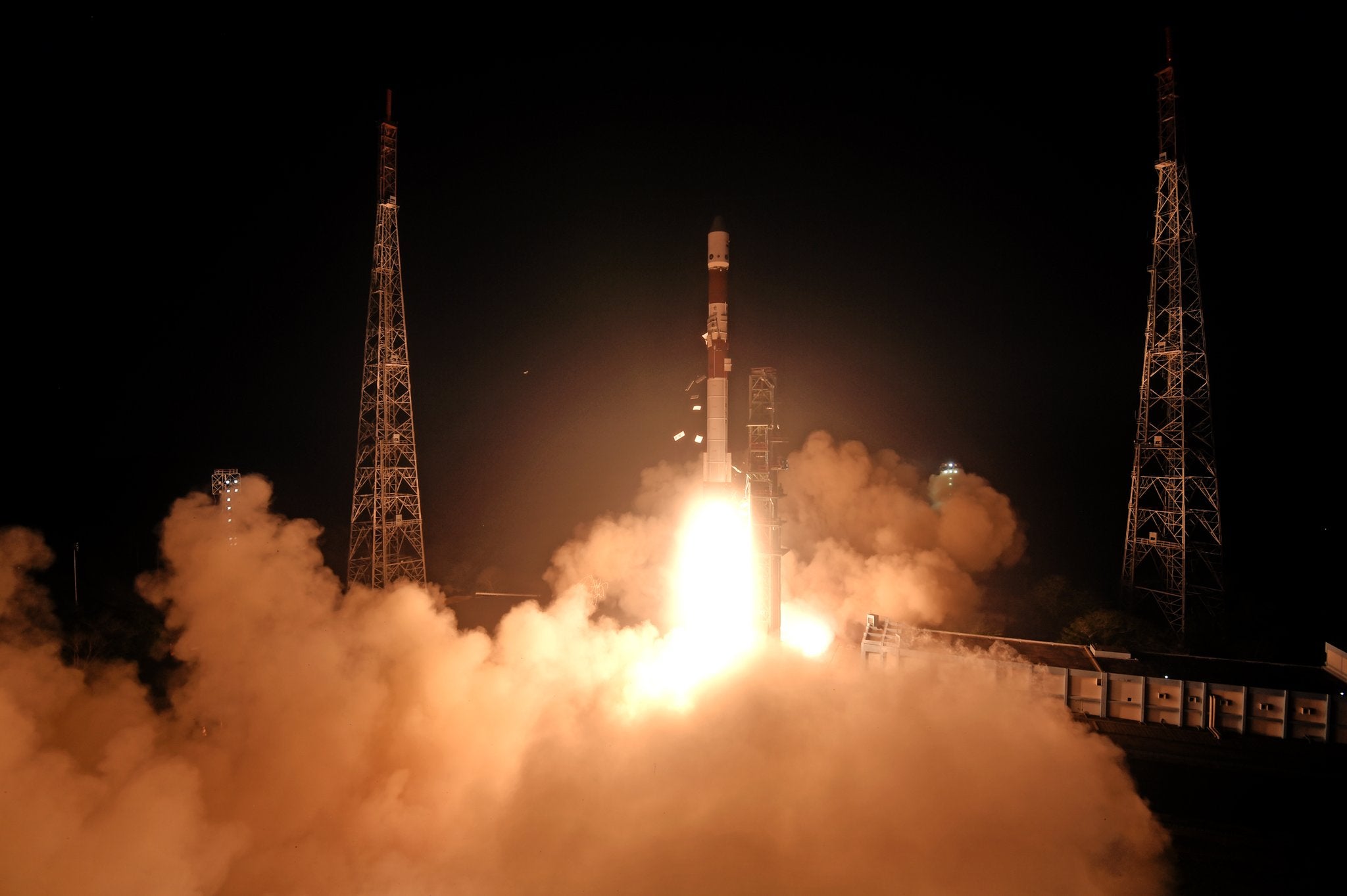India launches satellites for space docking test key to future moon missions
Only the US, Russia and China have successfully demonstrated space-docking technology so far
Your support helps us to tell the story
From reproductive rights to climate change to Big Tech, The Independent is on the ground when the story is developing. Whether it's investigating the financials of Elon Musk's pro-Trump PAC or producing our latest documentary, 'The A Word', which shines a light on the American women fighting for reproductive rights, we know how important it is to parse out the facts from the messaging.
At such a critical moment in US history, we need reporters on the ground. Your donation allows us to keep sending journalists to speak to both sides of the story.
The Independent is trusted by Americans across the entire political spectrum. And unlike many other quality news outlets, we choose not to lock Americans out of our reporting and analysis with paywalls. We believe quality journalism should be available to everyone, paid for by those who can afford it.
Your support makes all the difference.India successfully launched its first space docking test on Monday in a historic mission that could put it in an exclusive league of nations to have achieved the feat.
The Space Docking Experiment, or SpaDeX, went up aboard the indigenously developed PSLV rocket from space agencyIsro’s Satish Dhawan Space Centre in the southern state of Andhra Pradesh at 10pm local time on Monday.
The launch suffered an unusual two-minute delay due to what Isro described as a “traffic jam” in space caused by “conjunctions with other satellites in the same orbit”.
“PSLV-C60 successfully launches SpaDeX and 24 payloads,” Isro said about 15 minutes after the launch as the spacecraft reached an altitude of around 470 km.
“The rocket has placed the satellites in the right orbit,” Isro chairman S Somnath said.

The mission to test satellite interlinking in space is seen as vital for Isro’s future missions, including the development of its own space station.
“This technology is essential for India’s space ambitions such as Indian on Moon, sample return from the moon, the building and operation of Bharatiya Antariksh Station, etc,” the agency said in a blog post.
“Through this mission, India is marching towards becoming the fourth country in the world to have space docking technology.”
So far, only the US, Russia and China have successfully demonstrated space-docking technology.
If successful, the mission could also open up a market for Isro to help launch global missions requiring “docking facilities or assembly in space”, astrophysicist Somak Raychaudhary from Ashoka University told Reuters.
Slow-motion liftoff and onboard views! 🚀✨
— ISRO (@isro) December 31, 2024
SpaDeX’s historic mission onboard PSLV-C60 delivers breathtaking visuals, showcasing India’s strides in space exploration. 🌌🛰️
📖 More info: https://t.co/jQEnGi3W2d#SpaDeX #ISRO 🚀
📍 @DrJitendraSingh pic.twitter.com/5eJ6FAiIxI
The mission is deploying two satellites, each weighing about 220 kg, into orbit and showing power transfer between them once they link together.
Each of the satellites carries advanced payloads, including an imaging system and a space radiation-monitoring device to obtain data for future crewed missions.
Experts say such in-space docking of two crafts is vital for operating space stations, spacecraft control, and payload operations.
The pivotal docking test is slated to take place in about a week around 7 January, according to Isro.
It will involve careful manoeuvers to adjust the relative velocities of the two spacecrafts “with progressively reduced inter-satellite distances of 5km, 1.5km, 500m, 225m, 15m, and 3m”, ultimately leading to their docking, the space agency said.
The mission is expected to be “even more challenging” due to the small sizes and masses of the two crafts which would require finer precision for rendezvous compared to larger probes.
“After successful docking and rigidisation, electrical power transfer between the two satellites will be demonstrated before undocking and separation of the two satellites to start the operation of their respective payloads for the expected mission life of up to two years,” Isro said.
The space agency hopes the mission will be a forerunner for autonomous docking needed for India’s Chandrayaan-4 moon sample return mission planned for 2028.
Monday’s launch marked the first time in India that the rocket and the satellites were integrated and tested by a private company – Ananth Technologies – instead of a state institution.

Join our commenting forum
Join thought-provoking conversations, follow other Independent readers and see their replies
Comments